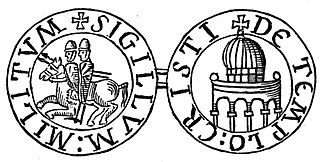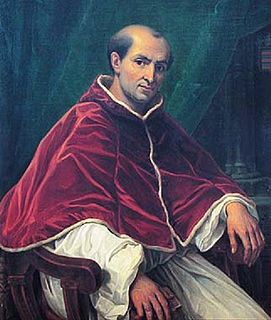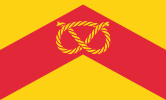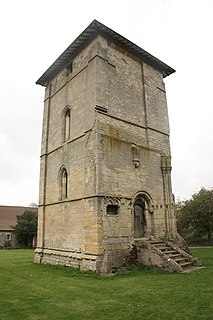
Temple Bruer Preceptory is in a farm-yard in the civil parish of Temple Bruer with Temple High Grange, North Kesteven, Lincolnshire, England. It is one of the few Knights Templar sites left in England where any ruins remain standing. Its name comes from its Templar ownership and its position in the middle of the Lincoln Heath, bruyère (heather) from the French language current at the time. It was founded in the period 1150 to 1160 and the order was dissolved in 1312. The site is at grid reference TF 0085 5370, located between the A15 and A607 roads, 2.5 miles (4.0 km) north from Cranwell. The site has been excavated twice, firstly by the Rev Dr. G. Oliver, the rector of Scopwick in 1832-3, and in 1908 by Sir William St John Hope.
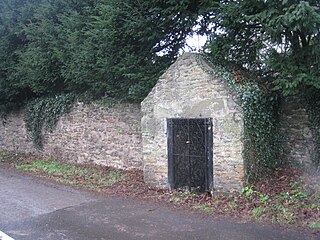
Bottesford Preceptory was sited at Bottesford, just to the south of Scunthorpe, in Lindsey, England. It was on low-lying land, near the Bottesford Beck, about 3 miles (5 km) to the west of the escarpment of the Lincoln Cliff limestone upland, and about the same distance to the east of the River Trent. A preceptory was a community of the Knights Templar who lived on one of that order's estates in the charge of its preceptor. A preceptory also referred to the estate and its buildings. The present Bottesford Manor is believed to have been the gatehouse to the preceptory.

Aslackby Preceptory in Lincolnshire lay to the south-east of Aslackby Church. Until about 1891 a tower, possibly of the preceptory church, together with a vaulted undercroft, survived as part the Temple farmhouse. Temple farmhouse was subsequently rebuilt and a 15th-century window and a stone pinnacle remain in the garden

Rothley Temple, or more correctly Rothley Preceptory, was a preceptory in the village of Rothley, Leicestershire, England, associated with both the Knights Templar and the Knights Hospitaller.

Newland with Woodhouse Moor is a civil parish in the City of Wakefield in West Yorkshire, England, consisting of some open countryside west of Normanton, including Newland Hall.
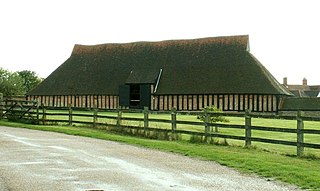
Cressing Temple is an ancient monument situated between Witham and Braintree in Essex, close to the villages of Cressing and White Notley. It was amongst the very earliest and largest of the possessions of the Knights Templar in England, and is currently open to the public as a visitor site. It is the location of three Grade I listed Medieval barns, one of which is the oldest standing timber-framed barn in the world.
Commandry, or commandery, was the smallest division of the European landed estate or manor under the control of a commander of a military order. The word is also applied to the emoluments granted to a commander in an order of knights. They were the equivalent for those orders to a monastic grange.
Baddesley Preceptory was a preceptory of the Knights Hospitaller at North Baddesley in Hampshire, England. The preceptory was founded at Godsfield but was moved soon after the Black Death.

Barrow Camera was a Knights Hospitaller foundation in the parish of Barrow upon Trent, Derbyshire, England.
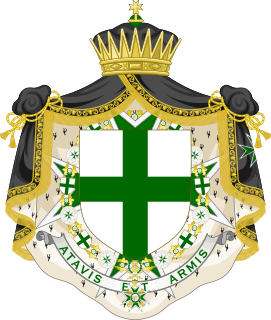
Locko Preceptory was a Preceptory of the Military and Hospitaller Order of Saint Lazarus of Jerusalem, situated just over a mile north of Spondon, Derbyshire; the site is today part of the Locko Park estate. It is the only recorded Lazarite Preceptory in England.

Yeaveley Preceptory, also known as Stydd Preceptory, was a preceptory of the Knights Hospitaller, near to the village of Yeaveley, in Derbyshire, England. It was located around a mile west of the village, on the site of the current Stydd Hall. The Preceptory has been variously known as "Yeaveley Preceptory", "Yeaveley Bailiwick", "Yeaveley and Barrow Preceptory" and "Stydd Preceptory".
Temple Guiting Preceptory was a medieval monastic house of the Knights Templar in Gloucestershire, England. It was founded around the middle of the twelfth century, receiving grants of land from Gilbert de Lacy and Roger de Waterville. Following the closure of the order in 1308-1309, the last preceptor of Guiting was sent to a monastery in the Diocese of Worcester with a small maintenance charged upon the lands of Temple Guiting.
Great Limber Preceptory, Limber Magna was a Camera (farm) of the Knights Templar and later the Knights Hospitaller in the village of Great Limber, Lincolnshire, England.

Ossington Preceptory was a preceptory of the Knights Hospitaller, near to the village of Ossington in Nottinghamshire, England.
Trentham Priory was a Christian priory in North Staffordshire, England, on an unknown site near the confluence between the young River Trent and two local streams.
Newcastle-under-Lyme Friary was a religious house of Dominican friars in Newcastle-under-Lyme, Staffordshire, England. Founded sometime in the 13th century, it was a surrendered to the Crown in 1538, during the Dissolution of the Monasteries.
Newcastle-under-Lyme Friary was a religious house of Franciscan friars in Stafford, Staffordshire, England. Founded sometime in the 13th century, it was a surrendered to the Crown in 1538, during the Dissolution of the Monasteries.
Temple Hirst Preceptory was a priory in North Yorkshire, England.

The site of the former preceptory at Temple Hill, South Witham. It 'has been largely under pasture' since the Knights Templar left in 1308.]] Withham Preceptory, one of the smallest Knights Templar preceptories in England, was founded, before 1164, at Temple Hill, near South Witham, Lincolnshire, and was abandoned in the early 14th century.


